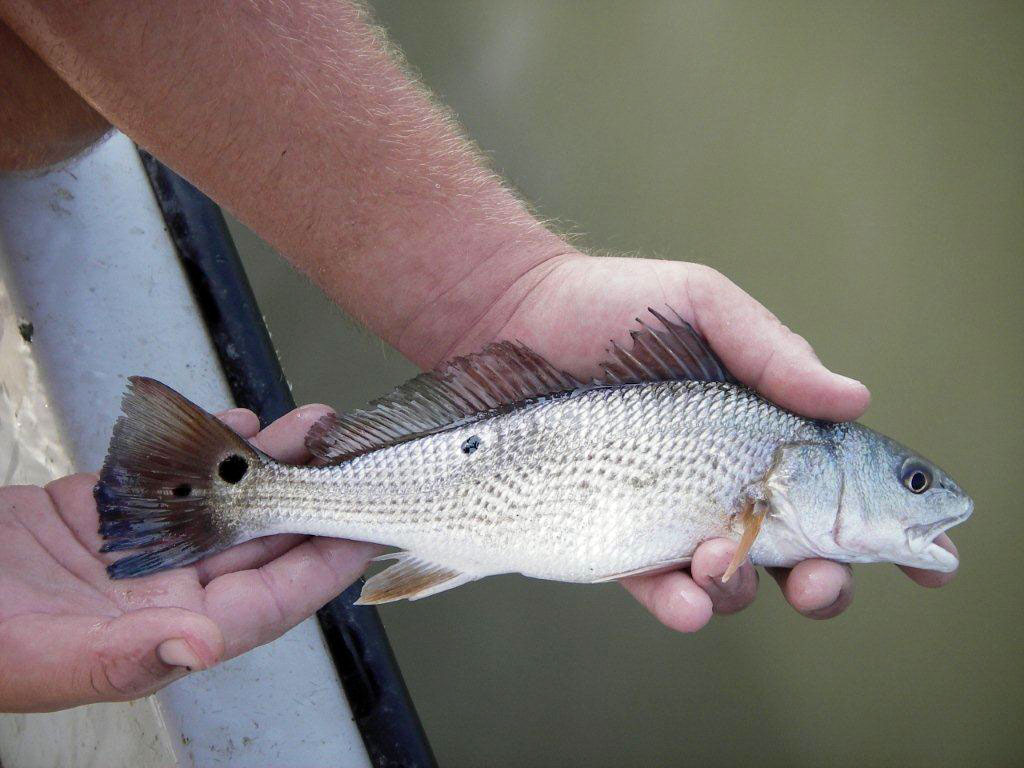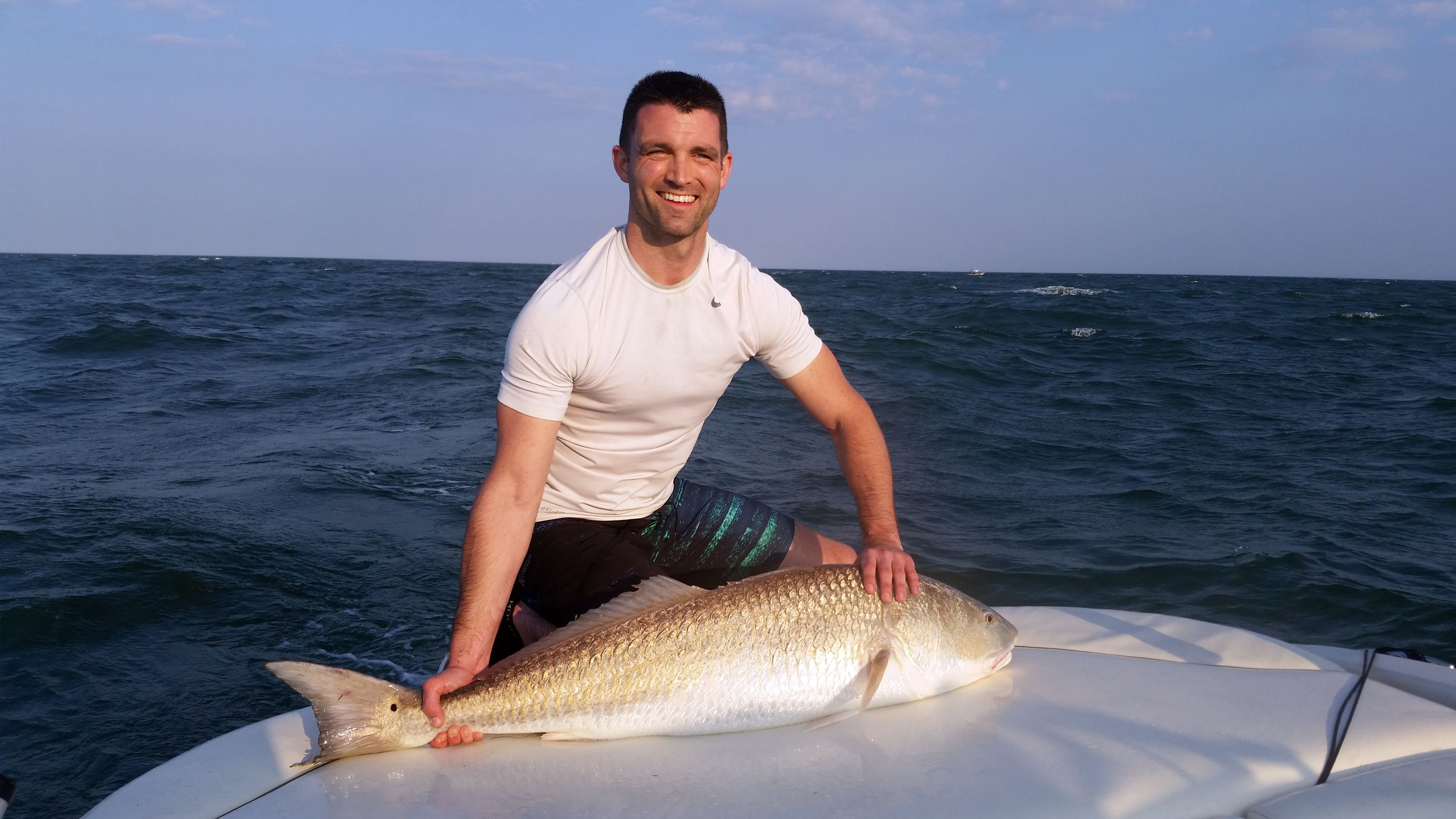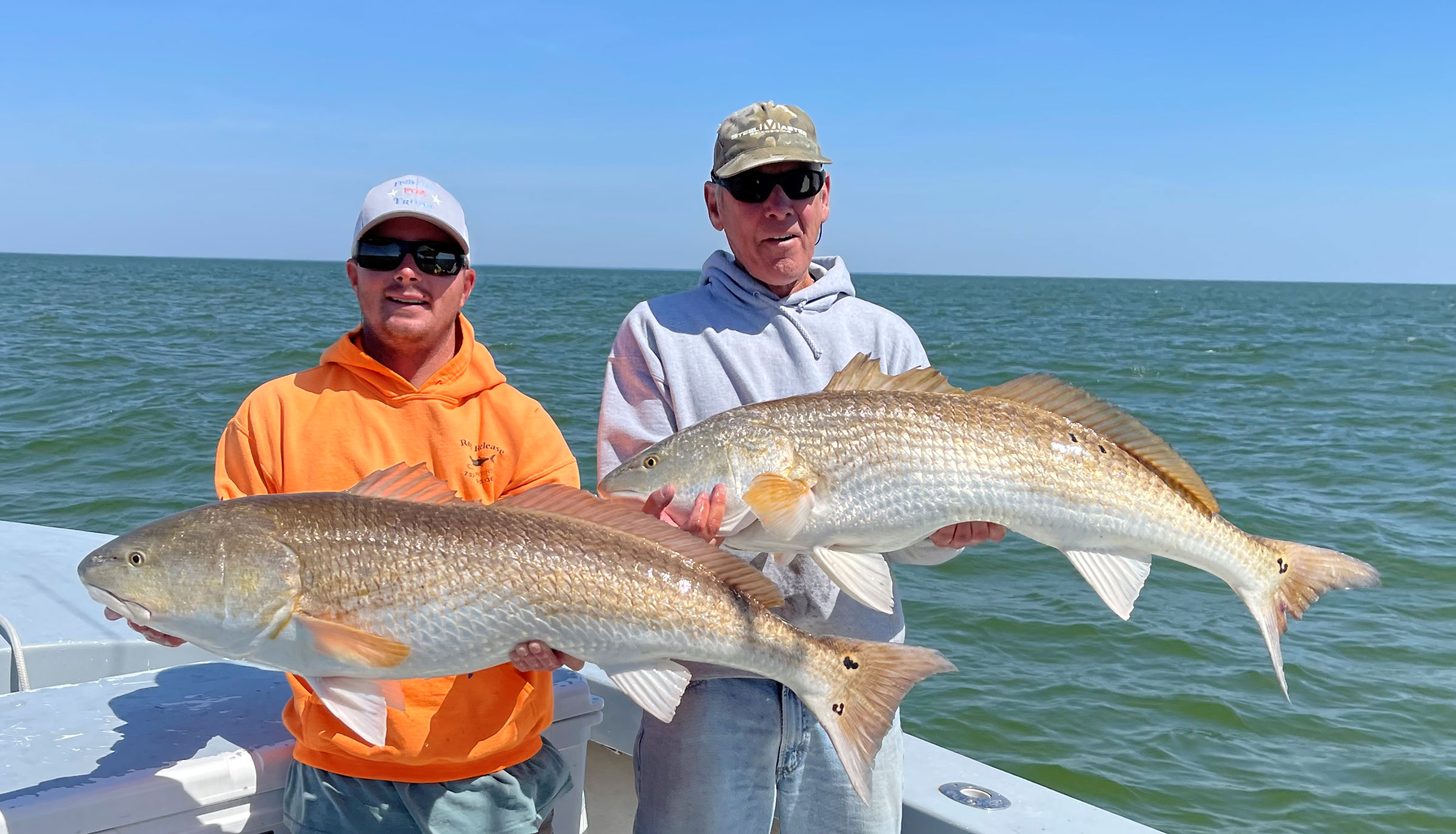Red Drum

Latest News and Resources
-
Red Drum Management Program Overview
-
2025 Annual Meeting Summary — October 2025
-
ASMFC Sciaenids Board Approves Red Drum Addendum II
-
Sciaenids Management Board Annual Meeting Presentations — October 2025
-
Sciaenids Plan Review Teams Meeting Agenda — November 2025
-
Sciaenids Management Board Annual Meeting Supplemental Materials — October 2025
-
2025 Annual Meeting Agenda and Public Comment Guidelines
-
Sciaenids Management Board Annual Meeting Materials — October 2025
-
2025 Annual Meeting Travel Authorization
-

Northern Stock
Population Abundance
Not overfished

Northern Stock
Fishing Mortality
Overfishing not occurring

Southern Stock
Population Abundance
Overfished

Southern Stock
Fishing Mortality
Overfishing occurring
Current Status
Stock status based on 2024 benchmark stock assessment. Draft Addendum II has been initiated to allow the Sciaenids Board to address the southern region’s negative stock status and concern with increasing fishing mortality observed in the northern region in recent years.
Meeting Calendar
Next Meeting
No events found
-
Recent Management Actions
Action
Status
Contacts
- Tracey Bauer, FMP Coordinator (TBauer@asmfc.org)
- Management Board, Doug Haymans, Chair
- Technical Committee, Ethan Simpson, Chair
- South Atlantic Species Advisory Panel, Craig Freeman, Chair
Species Information
Red drum, also known as redfish, are beloved game fish found along the Atlantic coast from Massachusetts to Florida. Highly sought after by recreational anglers, especially in the South where fishing is exclusively for sport, red drum thrive in estuarine waters during their younger years before moving to deeper areas as adults. They are known for their strong fight and delicious meat. While the northern populations are healthy and not overfished, the southern groups are currently overfished, emphasizing the need for ongoing conservation efforts. Managed with size and bag limits, red drum regulations help ensure sustainable fishing and the continued enjoyment of this popular species.
Management
Red drum are managed under Amendment 2 to the Interstate FMP, Addendum I, and Addendum II. The Amendment requires states to implement recreational creel and size limits to achieve the fishing mortality target, including a maximum size limit of 27 inches, and maintain existing commercial regulations. A harvest moratorium and Presidential Executive Order, enacted in 2007, prevents any harvest or sale of red drum from federal waters.
Addendum I (2013) seeks to increase our knowledge base and aid in the protection of important red drum habitat. It updates Amendment 2’s habitat section to include current information on red drum spawning habitat and habitat by life stage (egg, larval, juvenile, sub-adult, and adult). It also identifies and describes the distribution of key habitats and habitats of concern, including threats, habitat bottlenecks (habitat or habitat characteristics that limit the sustainability or recovery of red drum), and ecosystem considerations.
In March 2017, a report on Sciaenid Fish Habitat was released including information on habitat for several species, including red drum, during all stages of their lives, their associated Essential Fish Habitats and Habitat Areas of Particular Concern, threats and uncertainties to their habitats, and recommendations for habitat management and research. This report is meant to be a resource when amending FMPs in the future for these species.
In October 2025, the Board approved Addendum II to Amendment 2, in response to the 2024 Red Drum Benchmark Stock Assessment and Peer Review Report. The Addendum updates red drum management, with the goal of improving efficiency, flexibility, and timeliness in implementation of new regulations and providing assessment advice. In addition, the Addendum modifies the fishing mortality for the southern stock (South Carolina, Georgia, and Florida) to end overfishing and aligns red drum recreational regulations in Virginia, Maryland, and the Potomac River Fisheries Commission (PRFC) given their shared water bodies.
Stock Status
The 2024 Red Drum Benchmark Stock Assessment and Peer Review Report indicates the northern stock of red drum (New Jersey through North Carolina) is not overfished and not experiencing overfishing, while the southern stock (South Carolina through the east coast of Florida) is overfished and experiencing overfishing. The two stocks were assessed separately, using different methods.

The southern stock was assessed using the Stock Synthesis (SS) assessment model. Stock status is based on the latest three-year (2019-2021 September-August fishing years) averages of population measures. The three-year average spawning potential ratio (SPR) is less than the 30% SPR threshold, indicating the stock is experiencing overfishing. Spawning potential ratio is a measure of spawning biomass expected under current fishing mortality levels compared to spawning stock biomass expected if no fishing mortality were occurring. The three-year average female spawning stock biomass (SSB) was 8,737 metric tons (19.27 million pounds), less than the SSB threshold of 9,917 metric tons (21.87 million pounds), indicating the stock is overfished.
A robust, technically-sound SS model could not be developed for the northern stock, so the stock was assessed using a traffic light analysis (TLA). The TLA assigns a color (red, yellow or green) to categorize relative levels of metrics that reflect the condition of red drum adult abundance and fishery performance (i.e., fishing mortality). Although these metrics were not red in the last three years of the assessment, indicating the stock was not overfished nor experiencing overfishing, consistent yellow fishery performance metrics indicated increasing fishing mortality in recent years. Continued monitoring of the northern stock and the increasing trend in fishing mortality is recommended in future years through updates to the TLA.
Commercial & Recreational Fisheries
Red drum landings from New Jersey through the east coast of Florida in 2023 are estimated at 5.0 million pounds. In 2023, 61% of the total landings came from the southern region where the fishery is exclusively recreational, and 39% from the northern region. Since 2019, the northern region averaged 43% of the total harvest and the southern region averaged 57% of the total harvest. This is a significant change from the historic regional landings split (1981-2019), which averaged 76% from the southern region and 24% from the northern region.

Red drum landings from New Jersey through the east coast of Florida in 2024 are estimated at 8.1 million pounds. In 2024, 65% of the total landings came from the southern region where the fishery is exclusively recreational, and 35% from the northern region.
Northern Region (NJ-NC)
Red drum landings in the northern region totaled 2.8 million pounds in 2024, a decrease of approximately 44% from the previous year. Commercial landings totaled 237,034 pounds or 8% of the combined commercial and recreational harvest in the northern region, with 78% of commercial landings coming from North Carolina. Virginia commercial landings in 2024 increased to the highest value in the state’s time series since 1965.
Recreational landings in 2024 were estimated to be 2.6 million pounds in the northern region, an increase from the previous year’s estimates of recreational harvest at 1.8 million pounds. North Carolina and Virginia make up a large portion of northern recreational landings
Southern Region (SC–FL)
The southern region had no commercial landings; Florida commercial harvest has been prohibited since January 1988. South Carolina and Georgia designated red drum as a gamefish, banning commercial harvest and sale since 1987 and 2013, respectively.
Recreational landings in 2024 were estimated to be 5.3 million pounds in the southern region, a 75% increase from 2023. Florida, followed by Georgia and South Carolina, had the majority of recreational landings in 2024. The number of fish harvested in the recreational fishery in 2024 was 1.7 million fish, which was a 64% increase from 2024. The number of fish released in the southern region was 11.0 million fish, which was an increase from 2023 when 8.5 million fish were released.
Life History
The historic distribution of red drum (Sciaenops ocellatus) on the Atlantic coast is from Massachusetts through Florida, though few fish have been reported north of the Chesapeake Bay in recent years. Juveniles are most abundant in estuarine waters and inlets, while fish older than age four inhabit deeper waters. The adult fish migrate seasonally, moving offshore or south in the winter and inshore or north in the spring. Spawning occurs at night in the nearshore waters during the summer and fall. Prolific spawners, large females may produce up to two million eggs in a season. Eggs hatch within 24 to 36 hours of being spawned, and the larvae are carried by wind and tidal action into shallow, low salinity estuarine nursery areas. Juveniles and sub-adults stay in estuarine areas feeding on zooplankton and invertebrates such as small crabs and shrimp. Gradually, red drum expand their diet to include fish and larger invertebrates. Depending on the area, males mature between age one and four (20-28 inches in length), while females mature between age three and six (31-36 inches in length). Red drum may reach 60 years of age and 60 inches in length (corresponding to greater than 90 pounds in weight).
News & Resources
Explore recent news, management updates, and scientific reports to gain a deeper understanding of ongoing conservation efforts and sustainability strategies.
-
Prepared for the Commissioner Manual
-
A summary of all the board meetings, press releases and motions from the 2025 Annual Meeting.
-
The Commission’s Sciaenids Management Board approved Addendum II to Amendment 2 to the Interstate Fishery Management Plan (FMP) for Red Drum. The Addendum updates red drum management, with the goal of improving efficiency, flexibility, and timeliness in implementation of new regulations and providing assessment advice. In addition, the Addendum modifies the fishing mortality for the…
-
-
-
South Atlantic Advisory Panel Meeting Summary from October 2025
-
-
Consider Red Drum Addendum II: Modifications to Red Drum Management for Final Approval, Review Options, Public Comment Summary, and Advisory Panel Report (T. Bauer), Consider Final Approval of Addendum II; Consider Approval of Black Drum and Spotted Seatrout Fishery Management Plan Reviews and State Compliance for the 2024 Fishing Year (T. Bauer); Progress Update on…
-
-
-
-
The Atlantic coastal states of Maryland through Florida have scheduled hearings to gather public input on Draft Addendum II to Amendment 2 to the Interstate Fishery Management Plan for Red Drum. The Draft Addendum considers several changes to the management programs in the southern (South Carolina to Florida) and northern (New Jersey to North Carolina)…
-
Modifications to Red Drum Management
-
-
Get Hooked on ASMFC News
Dive into the latest updates and catch all the important news by joining our newsletter mailing list. Stay in the loop with meeting agendas, fisheries management news, and more.











